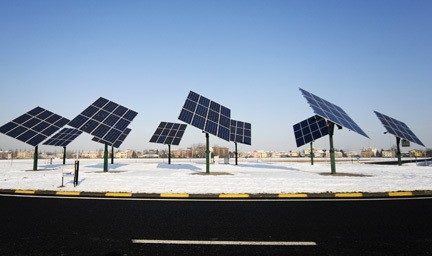Electricity and Pavement
CNN recently reported that “the explored idea of embedding solar cells to store energy inside the case, LEDs to illuminate the road lines and heating elements to resist ice and snow soon after, the concept of Solar Roads was born. The proposal calls for the traditional petroleum-based asphalt highways to be replaced with a system of structurally-engineered solar panels. These would act as a massive energy generator that could feed the grid during daytime. They would also recharge electric vehicles while moving, thus helping to reduce greenhouse emissions drastically.”
Reputable Companies
When searching for a company to provide you with the service you are in need of research is always key. There are many paving companies that are a point of reference who pride themselves on being educated and providing quality. Such companies include EJ Paving, Asphalt Paving and Superior Paving—a company that offers a lot of information and backs up their claims by having no middlemen or subcontractor, and “maintains their own equipment and an on-site asphalt plant in order to reduce our operating costs and pass those savings on to our customers.”
The Benefits of Solar Technology
Recently, Asphalt Magazine reported solar energy is being harnessed bringing together asphalt roadways producing great results. The idea is this would conceive what was speculated in the mid-1990s and has been implemented currently. The many concepts are gaining speed, and the future has never looked so good. The two industries are being brought together in various reasons and overall importance. One of the most basic, yet solid, concepts that are being used is the installation of solar panels placed along side highway corridors. The energy generated from the panels is used to power lighting, road signs and tunnel fans. Oregon as an overall state claims to be “the first solar-powered highway in the United States.” As of December 2008, the testing of approximately 600 104kW solar panels and technology were officially working along the highway south of Portland. These same methods and technology have been implemented and have played a major role in Germany and Italy over the past few years. Italy’s roadside assistance system of 80,000 solar panels gathers 12 million kilowatt hours per year, while Germany’s 16,000-panel system collects 3.2 million kilowatt hours per year. Competition is always great right?
Conclusion
It seems many questions will continue to arise regarding this specific technology. Questions like, how will the roadway be pieced and recycled with underground pipes located in the wear and tear of the road? When the asphalt is worn out, agitated and exposed, how will the lighter colors impact solar absorption? Would the roadway need an occasional sealer to repaint the surface darker, or black? Solar energy is used by less than 0.05 percent of all global energy and the global population consuming energy today. In order to implement systems to capture the best renewable energy available, these solar innovations need to be researched and funded to further develop energy efficiency. As the development and overall work continues, paved roadways and solar energy should be able to work simultaneously toward a bright and clear tomorrow. Images: Colored Road, Asphalt Workers, Solar Panel Desert,


